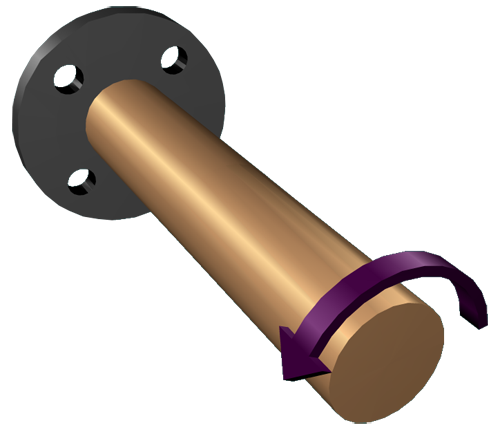
| CHECKPOINT QUESTIONS | |||
| Total: | Sets: | ||
| Time required: | {{duration}} | ||
| Difficulty: | {{difficulty}} | ||
Use equilibrium to determine the internal torque acting at the specified location.

Use equilibrium to determine the internal torque acting at the specified location.

Use equilibrium to determine the internal torque acting at the specified location.

Use equilibrium to determine the internal torque acting at the specified location.

You have correctly answered {{calculate_results()[0]}} of {{calculate_results()[1]}} problems in this series.
In total, you have answered {{calculate_results()[2]}} of the {{calculate_results()[3]}} problems correctly.




You have correctly answered {{calculate_results()[0]}} of {{calculate_results()[1]}} problems in this series.
In total, you have answered {{calculate_results()[2]}} of the {{calculate_results()[3]}} problems correctly.

T = internal torque,
L = shaft length,
G = shear modulus, and
J = polar moment of inertia.



You have correctly answered {{calculate_results()[0]}} of {{calculate_results()[1]}} problems in this series.
In total, you have answered {{calculate_results()[2]}} of the {{calculate_results()[3]}} problems correctly.

